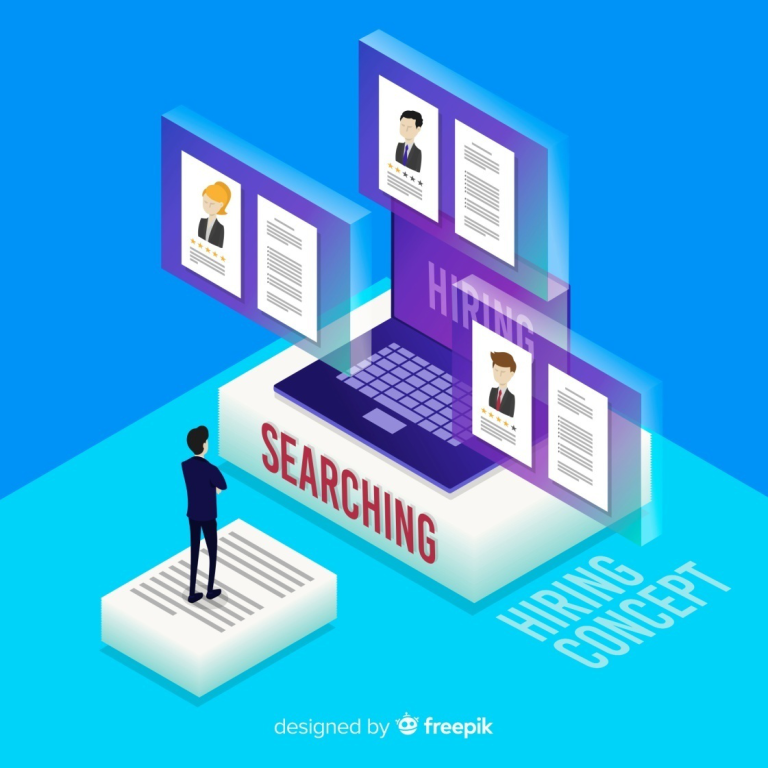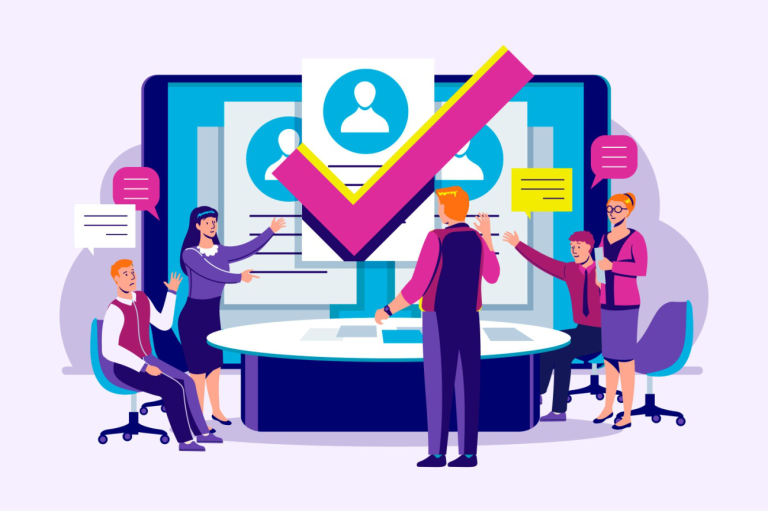If you’re still confused about the benefits of HRM systems for businesses, this post is for you. People management has evolved significantly, and Human Resources Management Systems (HRMS) have been at the forefront of this transformation.
Keep reading to explore the benefits of HRM Systems for businesses and employees, understand how HRIs can help businesses, and find a framework for selecting and implementing the right HRM system for your business.
Understanding HRM Systems and Their Importance
Human Resources Management Systems (HRMS) are comprehensive software solutions designed to automate and streamline HR processes.
They integrate various HR functions, including recruitment, performance management, payroll, benefits administration, and employee self-service, into a single system.
The core idea behind using HRMS in Markham, Stouffville, and Ajax workplaces is to reduce manual workloads, eliminate repetitive tasks, and provide HR professionals with more time to focus on strategic initiatives.
Key Components of an HRM System

- Applicant Tracking System (ATS): This module helps manage the entire recruitment process, from job postings to candidate selection. It streamlines resume collection, sorting, and interview scheduling, making the hiring process more efficient.
- Performance Management: HRM systemsoffer tools for setting employee goals, conducting performance reviews, and providing feedback. This ensures continuous performance improvement and aligns employee objectives with business goals.
- Payroll and Benefits Administration: Automating payroll calculations, tax deductions, and benefits administration reduces errors and ensures compliance with local regulations.
- Employee Self-Service Portals: These portals allow employees to access their information, submit leave requests, and update personal details without HR intervention, fostering a sense of ownership and transparency.
- Time and Attendance Management: This module tracks employee hours, attendance, and leave balances, integrating seamlessly with payroll to ensure accurate compensation.
- Training and Development: HRM systemsoften include tools for managing employee training programs, tracking certifications, and identifying skill gaps, contributing to workforce development.
Benefits of HRM Systems for Businesses
The benefits of HRM systems for businesses transcend their size or the industry they’re operational in. These advantages extend beyond the HR department, positively impacting the entire organization.
For Employees
The benefits of HRM systems for businesses include more than administrative pros – even the employees witness a difference when companies use HRMS software.
- Self-Service Portals: Empowering employees with self-service capabilities improve engagement and satisfaction. They can access their personal information, request time off, and enroll in benefits programs without relying on HR.
- Enhanced Communication: One of the primary benefits of HRM systems for businessesis facilitating communication between employees and HR. For example, employees can receive timely updates on company policies, training opportunities, and performance feedback.
- Career Development: Access to training and development resources through the HRMS helps employees enhance their skills and advance their careers, fostering a culture of continuous improvement.

For HR Departments
- Automated Tasks: By automating routine tasks such as payroll processing, benefits administration, and time tracking, HR professionals can focus on strategic initiatives like talent acquisition and employee engagement.
- Data-Driven Insights: HRMS provides valuable insights into workforce trends and performance metrics, enabling HR to make informed decisions that drive business success.
- Scalability: As businesses grow, HRM systemscan scale to accommodate increased workforce size and complexity. This ensures that HR operations remain efficient and effective regardless of company size.
Also, read a detailed analysis of how our HR Management solution, SimplyHRMS, transformed our clients’ HR operations here.
For the Organization
Let’s have a look at the benefits of HRM systems for businesses to have a sense of the bigger picture:
- Cost Savings: The efficiency gains from automating HR processes result in significant cost savings. For instance, reducing manual errors in payroll processing can save money on corrections and compliance fines.
- Improved Productivity: With streamlined HR operations, employees spend less time on administrative tasks and more time on productive work, boosting overall organizational productivity.
- Enhanced Employee Experience: A well-implemented HRMS improves the overall employee experience by making HR processes more transparent, accessible, and user-friendly.
The Transformative Power of HRIS
There’s a strong connection between HR practices and employee satisfaction. Human Resources Information Systems (HRIS) form the backbone of modern HRM systems.
They provide a centralized database for storing employee information and facilitating data-driven decision-making and strategic planning, all of which empower HR professionals to ensure maximum employee satisfaction.
1. Enhancing Decision-Making with Data-Driven Insights
HRIS systems collect and analyze vast amounts of data related to employee performance, turnover rates, training effectiveness, and more.
HR departments can identify trends, predict future workforce needs, and make informed decisions that align with the company’s strategic objectives by leveraging the extracted data.
For example, if the data indicates a high turnover rate in a particular department, HR can investigate the root causes and implement targeted retention strategies.
2. Streamlining HR Operations
The automation capabilities of HRIS eliminate many time-consuming tasks such as data entry, record-keeping, and report generation.
This not only increases efficiency but also reduces the risk of human error.
For instance, automated payroll processing ensures that employees are paid accurately and on time, enhancing their satisfaction and trust in the organization.
3. Improving Compliance and Risk Management
HRIS systems help ensure compliance with local labor laws and regulations by automating record-keeping and generating compliance reports.
They also provide tools for monitoring and managing workplace safety, mitigating risks associated with non-compliance and workplace incidents.
Exploring Different HRMS Solutions
The benefits of HRM systems for businesses are multifaceted. What’s a priority of one business, might not be for another.
This is why, when discussing the benefits of HRM systems for businesses, it’s essential to explore different HRMS solutions for multiple strategic objectives. There are two main types of HRMS solutions: cloud-based and on-premise.
Cloud-Based HRMS
Cloud-based HRMS solutions are hosted on the vendor’s servers and accessed via the Internet. They offer several advantages:
- Flexibility and Accessibility: Cloud-based systems can be accessed from anywhere with an internet connection, providing flexibility for remote and distributed teams.
- Cost-Effective: These solutions typically operate on a subscription model, reducing the upfront investment required for on-premise systems.
- Automatic Updates: Cloud-based HRMS providers handle system updates and maintenance, ensuring that the software is always up-to-date with the latest features and compliance requirements.
- Scalability: Cloud solutions can easily scale to accommodate business growth, allowing companies to add or remove users as needed.
On-Premise HRMS
On-premise HRMS solutions are installed on the company’s own servers and managed internally. They offer distinct benefits:
- Control and Customization: Businesses have complete control over their HRMS and can customize it to meet their specific needs and preferences.
- Data Security: For companies with stringent data security requirements, on-premise solutions provide greater control over data storage and access.
- Integration: On-premise systems can be integrated with existing enterprise software, providing a seamless workflow across different departments.
Choosing the Right HRMS
Selecting the right HRMS for your business requires careful consideration of several factors:
- Business Size and Complexity: Small businesses may benefit from the cost-effectiveness and simplicity of cloud-based solutions, while larger organizations with complex needs might prefer the control and customization of on-premise systems.
- Budget: Consider the total cost of ownership, including initial setup, ongoing maintenance, and potential scalability costs.
- User Experience: Ensure that the HRMS is user-friendly and intuitive for both HR professionals and employees.
- Vendor Support: Evaluate the level of support and training provided by the vendor to ensure a smooth implementation and ongoing operation.
- Compliance Requirements: Consider the regulatory landscape in your industry and region, and choose an HRMS that can help you maintain compliance.
10 Tips for Implementation and Optimization of HRMS Software Across Different Industries

Implementing and optimizing an HRMS (Human Resources Management System) can be a complex process but with the right approach, it can bring significant benefits to your organization. Here are ten tips to help you successfully implement and optimize your HRMS software:
1. Set Clear Objectives
Before you start, define what you want to achieve with your HRMS. Whether it’s improving recruitment processes, enhancing employee engagement, or ensuring compliance, having clear goals will guide your implementation and optimization efforts.
For instance, a manufacturing company might aim to improve workforce scheduling, while a tech startup might focus on streamlining recruitment.
2. Involve Key Stakeholders
Engage representatives from HR, IT, finance, and other relevant departments early in the process. Their input and buy-in are crucial for a smooth implementation and for addressing the needs of different user groups.
For example, a healthcare organization should involve HR, IT, nursing, and administrative staff to address diverse needs and ensure the system supports all critical functions.
3. Choose the Right Vendor
Select an HRMS vendor with a solid reputation and robust support services. Consider factors such as ease of use, customization options, scalability, and integration capabilities. Request demos and check references to make an informed decision.
For instance, a financial services firm might prioritize vendors known for robust data security features, while a retail business may look for scalability and ease of use.
4. Plan Thoroughly
Develop a detailed project plan outlining each phase of the implementation, including timelines, milestones, and responsibilities. This will help keep the project on track and ensure that all critical tasks are completed on time.
A construction company, for instance, might break down the plan into phases such as data migration, system configuration, and staff training to ensure a smooth transition.
5. Customize Thoughtfully
Work with your vendor to customize the HRMS to fit your organization’s specific needs. Avoid over-customization, which can complicate maintenance and upgrades.
For example, a hospitality business might customize the system to handle seasonal hiring, while an educational institution might need features for managing faculty contracts and tenure track.
Focus on essential customizations that enhance usability and align with your goals.
6. Provide Comprehensive Training
Invest in thorough training for HR staff and employees. Ensure they understand how to use the system effectively and are aware of its benefits. Offer ongoing training sessions to address any new features or changes.
For instance, a logistics company might offer role-specific training for dispatchers, drivers, and warehouse staff, ensuring everyone understands how to use the system effectively.
7. Test Extensively
Before going live, conduct extensive testing to identify and resolve any issues. This includes pilot testing with a small group of users to gather feedback and make necessary adjustments. Ensure all workflows function correctly and data is accurate.
For example, a pharmaceutical company might pilot-test the system in one department to gather feedback and make necessary adjustments before full-scale deployment.

8. Communicate Regularly
Keep all stakeholders informed throughout the implementation process. Regular updates on progress, challenges, and milestones help maintain transparency and manage expectations. Effective communication can also foster a sense of ownership among employees.
For instance, a non-profit organization might hold regular update meetings and send out newsletters to keep staff informed about progress, challenges, and milestones.
9. Monitor Performance
After implementation, closely monitor the HRMS’s performance. Use analytics and reporting tools to track key metrics such as system usage, employee engagement, and process efficiency. Regularly review these metrics to identify areas for improvement.
A law firm, for example, might track metrics like billable hours and case management efficiency to ensure the system is delivering value.
10. Continuously Optimize
Optimization is an ongoing process. Collect feedback from users to understand their experiences and challenges. Regularly update the system with new features and improvements to ensure it continues to meet your organization’s evolving needs.
For example, a manufacturing company might regularly update the system to improve shop floor scheduling and workforce productivity.
Partnering With Microsys as a Trusted Advisor
Microsys is a leading provider of HRMS solutions, offering expertise and support to guide you through the HRMS selection and implementation process. Here’s how we can help:
Our team of HRMS experts will work with you to understand your unique needs and recommend the best solution for your business. We offer personalized consultations to help you navigate the complexities of HRMS selection.
Plus, we provide end-to-end support, from initial setup and customization to ongoing maintenance and training. Our dedicated support team is always available to address any issues and ensure your HRMS runs smoothly.

So, are you ready to elevate your organization’s HR Management? We offer both cloud-based and on-premise HRMS solutions in Ottawa, Richmond Hill, Toronto, Aurora, Markham, Ajax, North York, and surrounding areas, tailored to meet the specific needs of your business.
With years of experience and a proven track record of successful HRMS implementations, Microsys is a trusted partner for businesses of all sizes. Our clients benefit from our deep industry knowledge and commitment to excellence.
Whether you’re a small startup or a large enterprise, we have the right solution to help you achieve your HR goals. Schedule a consultation with our experts to discover the benefits of HRM Systems for businesses like yours!



